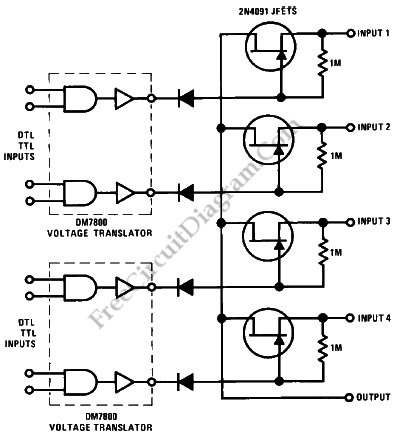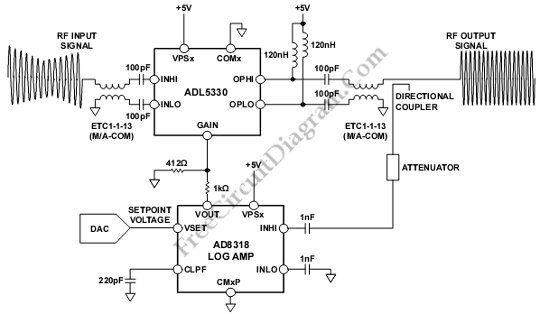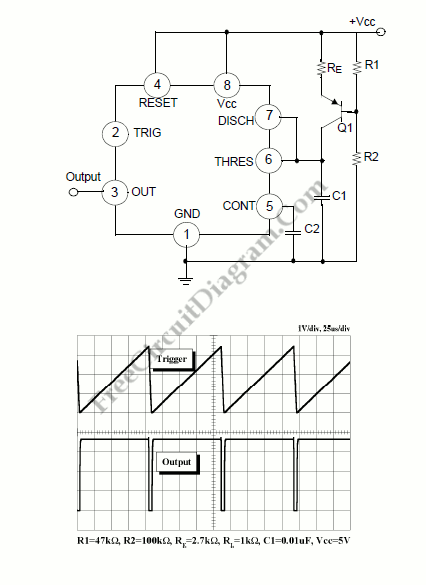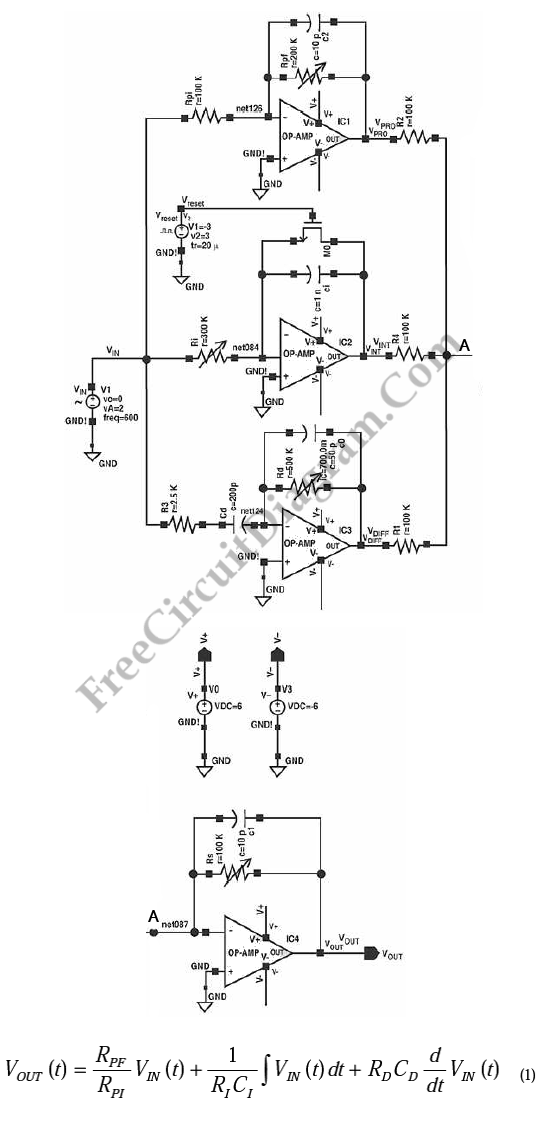
Thursday, September 23, 2010
4-Channel Commutator
To reach low channel ON resistance (<30 Ohm) and low OFF current leakage, 4-channel commutator uses the 2N4091. The DM7800 voltage translator is a monolithic device. This device give us +10V to -20V gate drive to the JFETs while at the same time giving DTL-TTL logic compatibility.
Here’s the circuit diagram:
Closed-Loop Automatic Power Control for RF Applications
This is a circuit of Closed-Loop Automatic Power Control for RF Applications. The circuit uses a log detector (AD8318) and a VGA (ADL5330). This circuit has a high temperature stability because of the high temperature stability of the AD8318. The AD8318 also ensures the same level of temperature stability at the output of the ADL5330 VGA. The ADL5330 is converted from an open-loop variable gain amplifier into a closed-loop output power control circuit by the log amp detector. The POUT vs. setpoint transfer function of AD8318 follows a linear-in-dB characteristic because the AD8318 has a linear-in-dB transfer function. Here is the circuit:
A sample of the output RF must be fed back to the detector by using additional attenuation and a directional coupler to operate the ADL5330 VGA in an AGC loop. A DAC is used to apply A setpoint voltage to the VSET input of the detector. The VOUT is connected to the GAIN pin of the ADL5330. The GAIN voltage is adjusted by the detector until the level at the RF input corresponds to the applied setpoint voltage. The correct balance between the setpoint voltage and the input signal level at the detector is set by the GAIN. [Source: Analog Devices Application Note]
555 IC Linear Ramp (Sawtooth) Generator/Oscillator
Ic= (Vcc-Ve)/Re
Ve= Vbe + (R2/(R1+R2))Vcc
The above equation divided on both sides by T gives us
V/T= (Q/T)/C
and may be simplified into the following equation.
S=I/C
PID Controller Using Op-Amp
Generally, specifically combined ICs perform a control task. We can carry out simple controls using analog ICs, such as operational amplifier circuitry. The basic component of “Control Electronics” is an integrated circuit (IC). IC is a small electronic device made out of a semiconductor material.According to equation 1, this analog circuit calculates PID control response. Sensor signal VIN is amplified by IC1 (P mode), integrated by IC2 (I mode), and differentiated by IC3 (D mode), and all three modes are summed by IC4 to derive control response VOUT
[Source: Jeon and Chun]



